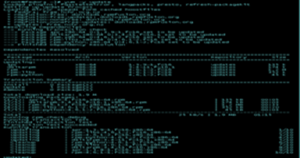Mastering Linux File Permissions: A Complete System Administrator Guide
Mastering Linux File Permissions: A Complete System Administrator Guide
Understanding Linux file permissions is fundamental for any system administrator or Linux user. This comprehensive guide will walk you through everything you need to know about managing file permissions effectively, ensuring your system remains secure while maintaining proper access control.
📑 Table of Contents
- Understanding the Linux Permission Model
- Permission Types Explained
- Using chmod: Changing File Permissions
- Numeric Method (Octal Notation)
- Symbolic Method
- Managing Ownership with chown and chgrp
- Special Permissions: SUID, SGID, and Sticky Bit
- SUID (Set User ID)
- SGID (Set Group ID)
- Sticky Bit
- Default Permissions with umask
- Practical Examples for System Administrators
- Web Server Directory Setup
- Shared Development Directory
- Backup Script Security
- Troubleshooting Common Permission Issues
- Best Practices for File Permission Management
- Advanced Permission Monitoring
- Conclusion
Understanding the Linux Permission Model
Linux uses a robust permission system that controls who can read, write, or execute files and directories. Every file and directory has three sets of permissions:
- Owner (User): The user who owns the file
- Group: Users who belong to the file’s group
- Others: All other users on the system
Permission Types Explained
| Permission | Symbol | Numeric Value | File Behavior | Directory Behavior |
| Read | r | 4 | View file contents | List directory contents |
| Write | w | 2 | Modify file contents | Create/delete files in directory |
| Execute | x | 1 | Run file as program | Enter directory (cd command) |
Using chmod: Changing File Permissions
The chmod command is your primary tool for modifying file permissions. You can use either symbolic or numeric notation.
Numeric Method (Octal Notation)
# Give read, write, execute to owner; read, execute to group and others
chmod 755 script.sh
# Give read, write to owner; read-only to group and others
chmod 644 document.txt
# Give full permissions to owner only
chmod 700 private_folder/Symbolic Method
# Add execute permission for owner
chmod u+x script.sh
# Remove write permission from group and others
chmod go-w file.txt
# Set read and write for owner, read for group
chmod u=rw,g=r,o= confidential.docManaging Ownership with chown and chgrp
Changing file ownership is equally important for proper access control:
# Change owner to user 'john'
chown john file.txt
# Change owner to 'john' and group to 'developers'
chown john:developers project/
# Change only group ownership
chgrp staff shared_folder/
# Recursively change ownership
chown -R apache:apache /var/www/html/Special Permissions: SUID, SGID, and Sticky Bit
Linux provides special permissions for advanced access control scenarios:
SUID (Set User ID)
When set on executable files, SUID allows users to run the program with the permissions of the file owner:
# Set SUID bit
chmod u+s /usr/bin/passwd
chmod 4755 /usr/bin/passwdSGID (Set Group ID)
SGID on directories ensures new files inherit the directory’s group:
# Set SGID on directory
chmod g+s /shared/projects/
chmod 2755 /shared/projects/Sticky Bit
Prevents users from deleting files they don’t own in shared directories:
# Set sticky bit on directory
chmod +t /tmp/
chmod 1777 /tmp/Default Permissions with umask
The umask command sets default permissions for newly created files and directories:
# View current umask
umask
# Set umask to create files with 644 permissions
umask 022
# Set restrictive umask (files: 600, directories: 700)
umask 077Practical Examples for System Administrators
Web Server Directory Setup
# Set up web directory with proper permissions
mkdir /var/www/mysite
chown -R www-data:www-data /var/www/mysite
chmod -R 755 /var/www/mysite
find /var/www/mysite -type f -exec chmod 644 {} \;Shared Development Directory
# Create shared directory for development team
mkdir /shared/development
chown root:developers /shared/development
chmod 2775 /shared/developmentBackup Script Security
# Secure backup script
chown root:backup /usr/local/bin/backup.sh
chmod 750 /usr/local/bin/backup.shTroubleshooting Common Permission Issues
Here are solutions to frequent permission-related problems:
- “Permission denied” when running scripts: Add execute permission with
chmod +x script.sh - Web files not accessible: Ensure web server user can read files (
chmod 644for files,755for directories) - Cannot write to directory: Check both directory permissions and parent directory permissions
- Files created with wrong permissions: Adjust umask or set SGID on parent directory
Best Practices for File Permission Management
- Principle of Least Privilege: Grant only the minimum permissions necessary
- Regular Audits: Use
findcommands to locate files with unusual permissions - Group Management: Organize users into logical groups for easier permission management
- Script Automation: Create scripts for consistent permission application across environments
- Documentation: Document custom permission schemes for team reference
Advanced Permission Monitoring
Monitor file permission changes for security:
# Find files with SUID/SGID bits
find / -perm /6000 -type f 2>/dev/null
# Find world-writable files
find / -perm -002 -type f 2>/dev/null
# Find directories with sticky bit
find / -perm /1000 -type d 2>/dev/nullConclusion
Mastering Linux file permissions is essential for maintaining secure and functional systems. By understanding the permission model, using chmod and chown effectively, and implementing best practices, you can ensure your Linux environment operates securely while providing appropriate access to users and applications.
Remember to regularly audit permissions, follow the principle of least privilege, and document your permission schemes. With these skills, you’ll be well-equipped to handle complex permission scenarios in any Linux environment.
Was this article helpful?
About Ramesh Sundararamaiah
Red Hat Certified Architect
Expert in Linux system administration, DevOps automation, and cloud infrastructure. Specializing in Red Hat Enterprise Linux, CentOS, Ubuntu, Docker, Ansible, and enterprise IT solutions.
